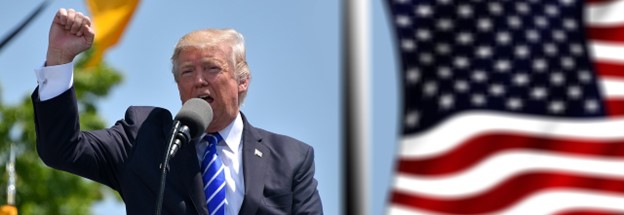In our first article on the Second Federal Indictment of former President Donald Trump (the “January 6” indictment, as opposed to the “Classified Documents at Mar A Lago” indictment), we discussed whether or not Double Jeopardy would apply, given that the Senate already acquitted Trump for substantially similar charges. (Frank – please add link to first article here) In our second, we discussed the impossibility of establishing that Donald Trump had a “guilty mind” when he asserted that he had not lost the 2020 Presidential Election. (Frank – please add link to second article here)
Today we review an allegation made in the January 6 indictment that may be just as hard to prove as whether or not Donald Trump truly believed he was fraudulently deprived of his office; The use of alternative electors.
Under Article II of the Constitution of the United States, the method for choosing the President and Vice-President of the United States is described in detail; “Each State shall appoint, in such Manner as the Legislature thereof may direct, a Number of Electors,” Section 1 states. “The Electors shall meet in their respective States, and vote by Ballot for two Persons…they shall make a List of all the Persons voted for, and of the Number of Votes for each; which List they shall sign and certify, and transmit sealed to the Seat of the Government of the United States, directed to the President of the Senate. The President of the Senate shall, in the Presence of the Senate and House of Representatives, open all the Certificates, and the Votes shall then be counted. The Person having the greatest Number of Votes shall be the President.”
The original Article II called for the Electors to vote for two people, with the intention that the one with the most votes would become President, and the second place finisher Vice-President. However, as described by the National Constitution Center, “The most glaring early bugs in the system—the real possibility of ties (and) the fact that the president and vice-president could represent different political parties as had happened when Adams and Jefferson served together in 1796—were ironed out by the Twelfth Amendment in 1804.”
Under the Twelfth Amendment, “The Electors…shall name in their ballots the person voted for as President, and in distinct ballots the person voted for as Vice-President, and they shall make distinct lists of all persons voted for as President, and of all persons voted for as Vice-President, and of the number of votes for each.” There then follows a complicated series of rules for resolving tied votes, including directing that “if no person have such majority, then from the persons having the highest numbers not exceeding three on the list of those voted for as President, the House of Representatives shall choose immediately, by ballot, the President.”
This “Electoral College” is described by Darrell West in an article for the Brookings Institute; “The framers of the Constitution set up the Electoral College for a number of different reasons. According to Alexander Hamilton in Federalist Paper Number 68, the body was a compromise at the Constitutional Convention in Philadelphia between large and small states. Many of the latter worried that states such as Massachusetts, New York, Pennsylvania, and Virginia would dominate the presidency so they devised an institution where each state had Electoral College votes in proportion to the number of its senators and House members. The former advantaged small states since each state had two senators regardless of its size, while the latter aided large states because the number of House members was based on the state’s population.”
While West himself believes that the Electoral College has outlived its usefulness and should be abolished, he admits that “there are clear partisan divisions in these sentiments. In 2000, while the presidential election outcome was still being litigated, a Gallup survey reported that 73 percent of Democratic respondents supported a constitutional amendment to abolish the Electoral College and move to direct popular voting, but only 46 percent of Republican respondents supported that view. This gap has since widened as after the 2016 election, 81 percent of Democrats and 19 percent of Republicans affirmatively answered the same question.”
Judge John Wilson (ret.) served on the bench in NYC
The Report Concludes Tomorrow
